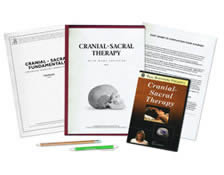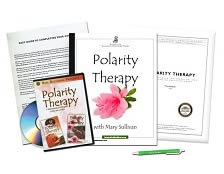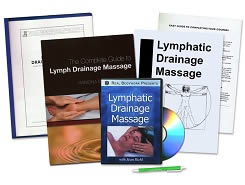 Want to earn continuing education credit for this article? Learn more.
Want to earn continuing education credit for this article? Learn more.
Studies have shown that the lack of touch can lead to severe psychiatric or physical problems, and even death in infants. Among the elder population it can lead to depression, anxiety, low self-esteem and lethargy. Lack of caring touch can result in a diminishing quality of life for anyone. Babies cry out to us for touch, but the touch-deprived senior often remains silent. It is important for those in the bodyworking professions to reach out to those who perhaps need them the most.
A frail elder would be defined as someone requiring assistance in taking care of every day needs such as dressing, bathing and eating. They may not be able to move around freely on their own, perhaps needing a walker or wheelchair to assist in mobility. Often they are living with family members or reside in some kind of assisted living facility.
For the very frail client, any vigorous or deep massage is generally contraindicated. But there are also many modalities with a lighter touch that provide similar health benefits, as well as offer comfort and compassion to the recipient. For many frail elders a typical Swedish massage may be too stimulating, and care needs to be taken regarding the use of techniques that might influence the effects of medication. They may be taking medication for blood pressure, a blood thinner, insulin for diabetes or undergoing a regimen of chemotherapy. A thorough intake and evaluation is important in determining what techniques will be most beneficial to your client.
Less Invasive, Yet Effective Techniques
- Cranial Sacral Therapy – is a gentle, non-invasive technique that uses a light touch to encourage the healthy movement of cerebrospinal fluid. This method of bodywork is used to reduce the negative effects of stress, enhance overall health and improve resistance to disease. It has also been shown to reduce problems associated with pain as well as some neurological dysfunctions, because of its affect on the brain and spinal cord.
- Lymphatic Drainage – is used to stimulate the movement of lymph, which in turn helps to rid the body of inflammatory and toxic material. This technique uses a rhythmic, light touch to enhance the body’s own gentle pumping action within the lymphatic system. Lymphatic drainage massage helps to enhance the immune system as well as to reduce pain.
- Polarity Therapy – is a bodywork technique that is based on basic principles of energy. The body is gently manipulated to rebalance the negative and positive energies within the body. Polarity therapy also encourages living in harmony with nature and includes recommendations of improving ones diet and exercise.
- Reflexology – is a modality originally based on an ancient Chinese therapy. It involves the application of pressure to specific areas in the foot, hands and ears, which correspond to various parts of the body. The applied pressure to these reflex zones in turn stimulates body organs and relieves areas of energetic congestion. Reflexology is used to reduce pain, increase relaxation and stimulate circulation of blood and lymphatic fluids, and has been found to be useful in stress related illness and emotional disorders. Reflexology can also be used in circumstances where areas of the body are traumatized or diseased to the extent that direct touch is contraindicated.
- Shiatsu – a light compression technique, similar to acupressure, was developed in Japan and uses traditional acupuncture points which help to encourage the healthy flow of life energy as well as restore balance in the body. Shiatsu uses traditional five-element Chinese medicine, which shows a relationship between the earth’s natural rhythms and the human body. The technique produces a sense of relaxation while stimulating blood and lymphatic flow. In turn, this helps with pain relief and the strengthening of the body’s resistance to disease and discomfort.
- Therapeutic Touch – is a non-invasive form of energy work based on ancient energy healing methods. Used mostly by nurses, it is also used by other bodywork professionals who are trained to feel or sense energy imbalances in the client. The therapist uses a light touch or holds the hand above the body, with the client generally seated. Therapeutic Touch has been used in a variety of medical situations, including the care of premature infants. It is known to induce a state of relaxation within minutes.
Five Precautions
- Hot Stone Massage – it might seem gentle enough, but for those who are on certain pain medications, or who suffer from the effects of diabetes, they are less sensitive to heat and pain and may not be able to respond appropriately. Make sure you are well trained in this modality before using it on a frail or elderly client.
- Accommodating Special Needs – whether the massage is conducted in your office, a client’s home, an assisted living facility, a hospital or hospice, care needs to be taken to accommodate the special needs of the individual. Preparation in the way of extra bolsters or pillows, a blanket for added warmth or lubricants for dry or fragile skin is very important.
- Slower Mobility – depending on the modality or techniques used, you may want to limit the massage session to no more than a half hour, and allow extra time before and after the session to allow for slower mobility. Intake may take longer, your client may need more time to get undressed or there may be problems with mobility, getting on and off the table or in and out of the office. It may be necessary to assist the client with filling out forms and it is a good idea to provide a step stool for access to the table.
- Special Contraindications – would be to never work in an area that has received radiation therapy or that has a tumor.
- The Usual Precautions Are Also Advices – such as avoiding black and blue areas, varicose or other distended veins, areas of recent surgery, rashes, etc. And if your client has a pacemaker or other implanted device, make sure you get an okay from his/her physician.
At any age massage therapy can be a benefit, but for the frail elderly it ameliorates some of the inevitable physical discomfort and pain that accompanies growing older. It helps us improve their mobility as well. Getting a regular massage helps in the emotional aspects of their lives as well. It has been shown to reduce the feelings of isolation, fear, anxiety and depression perhaps because it offers a gentle, nurturing touch to those who may live a life alone without close family or friends.
Consider providing your services as a massage therapist to nursing homes, assisted care facilities, hospitals and hospice programs. You will find it is rewarding in more ways than words can express.
Earn continuing education credit for this article contained in our Geriatric Precautions series. Click here to enroll.














